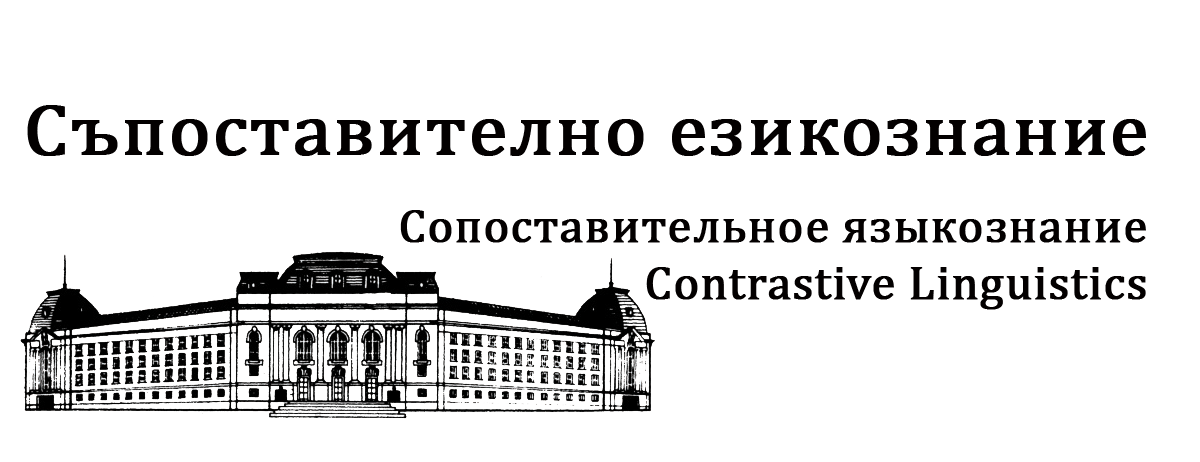Библиографии / Bibliography ХРУСАНОВА, Весела – Съпоставително изследване на български с други езици. Библиография. 1976 (І), № 4, 3–82.
Автор: Ангелина Иванова
1976 (І), № 3
Съпоставителни изследвания / Contrastive Studies НИКОВ, Мишел – Лексико-синтактична структура на същинските общи въпроси във френски и български език (Structure lexico-syntaxique des véritables questions totales en français et bulgare). 1976…
1976 (І), № 2
Съпоставителни изследвания / Contrastive Studies ИВАНОВА, Малина – За превода на полските деепричастия на български език. 1976 (І), № 2, 5–9. The problem of rendering Polish gerunds and constructions with…
1976 (І), № 1
ДАНЧЕВ, Андрей – За някои страни на съпоставителните изследвания (On some aspects of contrastive linguistic studies). 1976 (І), № 1, 6–26. The author of this paper examines some of the…
1976 – Бюлетин за съпоставително изследване на българския език с други езици
Списание Съпоставително езикознание / Сопоставительное языкознание / Contrastive Linguistics (списание на Софийския университет „Св. Климент Охридски“) е първото в света периодично издание, посветено на съпоставителни лингвистични изследвания. Историята на списанието…
В – Показалец на имената на авторите на рецензираните книги
Валтер, Х. – 1990 (XV), № 6, 84–86; 2008 (ХХХІІІ), № 2, 78–82; вж. още Walter, H. Васева, Ив. – 1982 (VІІ), № 3, 71–75; 1989 (XIV), № 2, 68–71;…
Б – Показалец на имената на авторите на рецензираните книги
Бабов, К. – 1979 (ІV), № 2, 93–94 Бадмаева, Л. Д. – 1996 (ХХІ), № 3, 92–93 Байрамова, Л. К. – 1998 (ХХІІІ), № 1–2, 214–218 Баранов, А. Г. –…
А – Показалец на имената на авторите на рецензираните книги
Публикации през периода 1976-2009 Абабурка, М. В. – 1980 (V), № 5, 79–80 Аветян, Э. Г. – 1983 (VІІІ), № 6, 72–74 Авилова, Н. С. – 1979 (ІV), № 1,…
